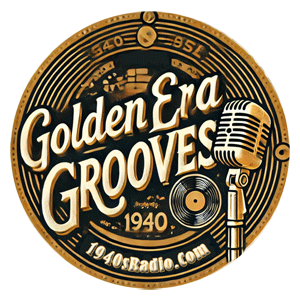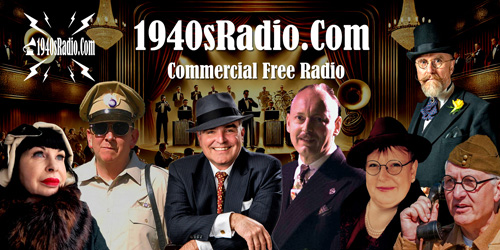
A Legacy of Harmony and Swing
The Andrews Sisters
Introduction
The Andrews Sisters were one of the most successful and beloved American close harmony singing groups of the 20th century. Comprising LaVerne, Maxene, and Patty Andrews, they became international stars during the swing and boogie-woogie era of the 1930s and 1940s. Their tight vocal harmonies, energetic performances, and infectious enthusiasm made them a favourite among audiences worldwide.
Early Years
Born in Minnesota, the three sisters—LaVerne (1911), Maxene (1916), and Patty (1918)—were influenced by the harmonies of the Boswell Sisters, a popular jazz trio. They honed their craft as children and performed locally before moving to New York to pursue a professional career. Their big break came in 1937 when they signed with Decca Records and recorded "Bei Mir Bist Du Schön," their first major hit.
 Rise to Fame
Rise to Fame
Throughout the late 1930s and 1940s, The Andrews Sisters dominated the charts with their unique blend of swing, jazz, and boogie-woogie. They recorded hundreds of songs, including:
- "Boogie Woogie Bugle Boy"
- "Don't Sit Under the Apple Tree"
- "Rum and Coca-Cola"
- "Beer Barrel Polka"
Their music resonated particularly with soldiers during World War II, as they performed extensively for the USO, boosting morale at home and abroad. Their lively and spirited performances made them a symbol of the war effort.
Hollywood and Radio Success
Beyond music, The Andrews Sisters also found success in Hollywood. They appeared in over a dozen films, often alongside major stars such as Bing Crosby, Bud Abbott & Lou Costello, and Bob Hope. Their movies, including Buck Privates (1941) and Follow the Boys (1944), further solidified their place in American entertainment.
The trio also became a staple on radio programs, performing regularly with Crosby and other big band legends. Their collaborations brought about some of their most enduring songs, including the wartime favourite "Ac-Cent-Tchu-Ate the Positive."
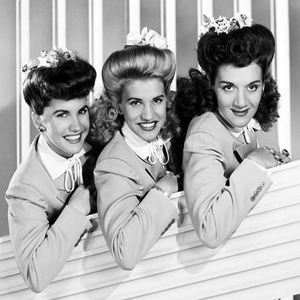 Post-War Career and Challenges
Post-War Career and Challenges
After World War II, musical tastes changed, but The Andrews Sisters remained popular. However, tensions between the sisters grew, leading to a brief disbandment in the early 1950s when Patty pursued a solo career. They reunited in 1956 and continued performing together, albeit with less commercial success than in their heyday.
Following LaVerne's passing in 1967, Maxene and Patty attempted to keep the act going, but the strain on their relationship led to a permanent split. Despite their struggles, their contributions to music remained widely recognized.
Legacy and Influence
The Andrews Sisters' influence on music is undeniable. They set the standard for vocal harmony groups and paved the way for future acts, including The McGuire Sisters, The Supremes, and even modern groups like The Puppini Sisters. Their songs continue to be covered, and their impact on swing, jazz, and pop music endures.
In recognition of their contributions, The Andrews Sisters were awarded a star on the Hollywood Walk of Fame and inducted into the Vocal Group Hall of Fame. Their music remains a beloved part of American cultural history.
Conclusion
With their distinctive sound, boundless energy, and a legacy that transcends generations, The Andrews Sisters remain one of the greatest vocal groups of all time. Their harmonies defined an era and continue inspiring musicians and fans alike.
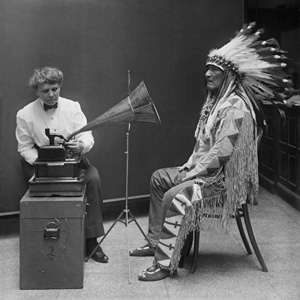 The Rise of Voice and Music Recording Devices
The Rise of Voice and Music Recording Devices
Wax Cylinders to Digital Streaming
Bridging The Gap Between Artists and Listeners
Throughout history, the way we record and play back voice and music has undergone a remarkable transformation. From the early 1900s, when the cylinder phonograph was the leading technology, to the present era of digital streaming, advancements in recording and playback devices have revolutionized the music industry and how we experience sound.
1900s: Cylinder Phonographs and Early Discs
At the turn of the 20th century, the cylinder phonograph, invented by Thomas Edison in 1877, was the dominant sound recording and playback device. It used wax cylinders to capture audio, which could be replayed on mechanical devices. However, these cylinders had limited playback duration and were soon overtaken by flat disc records.
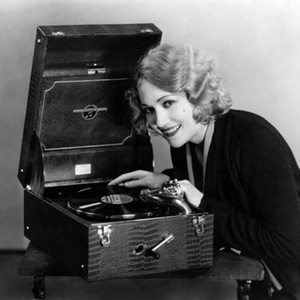 Emile Berliner introduced the gramophone in the late 19th century, which utilized flat discs instead of cylinders. By the early 1900s, shellac records played at 78 RPM (revolutions per minute), and became the standard for recorded music, offering improved durability and mass production capabilities.
Emile Berliner introduced the gramophone in the late 19th century, which utilized flat discs instead of cylinders. By the early 1900s, shellac records played at 78 RPM (revolutions per minute), and became the standard for recorded music, offering improved durability and mass production capabilities.
1920s - 1950s: Vinyl Records and Magnetic Tape
The 1920s saw the rise of electric recording techniques giving huge improvements to audio fidelity. The invention of the microphone and electronic amplification allowed for clearer, more dynamic recordings.
During the 1940s and 1950s, vinyl records replaced shellac discs. Vinyl was more durable and offered better sound quality. The long-playing (LP) 33⅓ RPM records, introduced by Columbia Records in 1948, and the 45 RPM singles from RCA Victor, revolutionised music consumption, allowing for entire albums or single songs to be readily available.
Meanwhile, magnetic tape technology, pioneered by German engineers during World War II, transformed both recording and playback. Reel-to-reel tape recorders provided superior sound fidelity and editing capabilities. By the 1950s, the consumer-friendly compact cassette tape, developed by Philips, became a popular format for home recording and music playback.
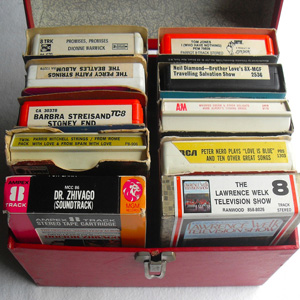 1960s - 1980s: Cassette Tapes, 8 Track, and Compact Discs
1960s - 1980s: Cassette Tapes, 8 Track, and Compact Discs
The 1960s and 1970s saw the rise of the 8-track tape, which allowed music to be played continuously without needing to be flipped, making it a favourite for car audio systems. However, cassette tapes, introduced in the early 1960s, eventually surpassed 8 tracks due to their compact size, reusability, and ease of recording.
1982 saw the emergence of the compact disc (CD) as a revolutionary digital format. Offering high-fidelity sound without the degrading issues of analogue tapes and records, CDs became the dominant format for music distribution throughout the 1990s and early 2000s.
1990s - 2000s: Digital Revolution and MP3 Players
The 1990s ushered in the digital age, transforming how music was recorded and played back. The MP3 file format, developed in the late 1980s and popularized in the 1990s, allowed music to be compressed without significant loss of quality, making it easy to store and share audio files.
The early 2000s saw the explosion of MP3 players, such as the Apple iPod, which allowed users to carry thousands of songs in a small, portable device. This marked the shift away from physical media toward digital music consumption.
 2010s - Present: Streaming and Smart Devices
2010s - Present: Streaming and Smart Devices
Today, streaming services like Spotify, Apple Music, and YouTube have largely replaced physical media and even digital downloads, cloud-based storage and fast internet connections allow instant access to millions of songs on demand.
Voice assistants and smart speakers, like Amazon Echo, and Google Home, integrate with streaming platforms making music playback more seamless than ever.
Modern recording technology has also evolved, with digital audio workstations (DAWs) enabling professional quality recordings from home studios. High-resolution audio formats, lossless streaming, and AI-driven recommendations continue to shape the future of music consumption.
Conclusion
From Edison’s wax cylinders to digital streaming, the evolution of recording and playback devices has drastically changed how we experience music and voice recordings. In the future, as technology advances, we can expect even more immersive and high-fidelity audio experiences, further bridging the gap between artists and listeners worldwide.





